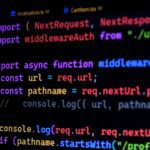Requirements gathering is a foundational phase in the development process that ensures alignment with Understanding Core business goals should be reflected in the requirements documentation for effective software applications. is vital for aligning product requirements with the overall strategy, stakeholder needs, and technical feasibility in the software development process. Skipping or rushing this phase can lead to costly errors, scope creep, or requirements management tools mismatched expectations. Below are the five essential steps:
1. Define Business Objectives
Start by identifying the business requirements through requirement elicitation. core business goals the software aims to achieve. Examples include increasing revenue, improving operational efficiency, or gaining a competitive edge. This step clarifies the “why” behind the project and ensures the software aligns with long-term strategic outcomes. Questions to address during the eliciting requirements process:
- What problem does the software solve in terms of business requirements?
- How will success be measured (e.g., ROI, user adoption)?
2. Identify Stakeholders
List all parties with a vested interest in the project. Stakeholders typically include:
- End-users play a crucial role in defining product requirements. (primary beneficiaries of the software).
- Project sponsors are essential in the gathering process to ensure alignment with business requirements and the software product goals. (senior management, clients).
- Technical teams should adhere to best practices in the systems development life cycle to enhance software quality and ensure effective requirements management. (developers, IT department).
- External parties (regulators, third-party vendors, or requirements management software).
Involve them early to ensure diverse perspectives are captured and prioritized in the project scope.
3. Elicit Stakeholder Requirements
Use structured techniques to gather detailed insights:
- Interviews: One-on-one discussions for deep dives into needs.
- Workshops/Brainstorming: Collaborative sessions to prioritize features based on user needs.
- Surveys/Questionnaires are effective tools in the requirements gathering process to capture user feedback on product development.: Scalable for large or remote groups.
- User Stories: “As a [user], I want [feature] so that [benefit].”
Focus on both Functional requirements must be documented in the product requirements document to guide the technical teams. (e.g., “users must log in via email”) and non-functional requirements should also be considered during the requirements analysis phase. (e.g., security, performance).
4. Document Requirements
Convert raw insights into a clear, actionable format using jama software. Common documentation methods include requirements management tools.
- Software Requirements Specification (SRS): A formal, detailed blueprint.
- Use Cases/User Stories: Describe interactions and workflows within the software project.
- Functional Decomposition: Break complex features into smaller tasks.
Ensure clarity and avoid ambiguity—ambiguous terms like “user-friendly” should be quantified (e.g., “load time < 2 seconds”).
5. Validate Requirements
Review the documented requirements with stakeholders to ensure they meet user needs.
- Confirm accuracy and completeness of the requirements to facilitate the software development process.
- Identify gaps, contradictions, or unrealistic expectations.
- Prioritize features (e.g., MoSCoW method: Must-have, Should-have, Could-have, Won’t-have) using requirements management software.
Validation methods include prototyping, sign-offs, or feasibility studies. This step minimizes rework and ensures alignment before development begins.
Key Outcomes
- A shared understanding of goals and constraints is critical for successful product development.
- Clear documentation to guide the software development process and testing.
- A foundation for estimating timelines, costs, and resources is established through the product requirements document during the requirements analysis phase.
By following these best practices, teams reduce risks, streamline communication, and build software applications that truly meet stakeholder and business needs in the agile framework.
#SoftwareDevelopment #RequirementsGathering #BusinessAnalysis #ProjectManagement #AgileDevelopment #StakeholderEngagement #ProductManagement #ITProjects #TechInnovation #DigitalTransformation #FusionaILabs






Leave a comment